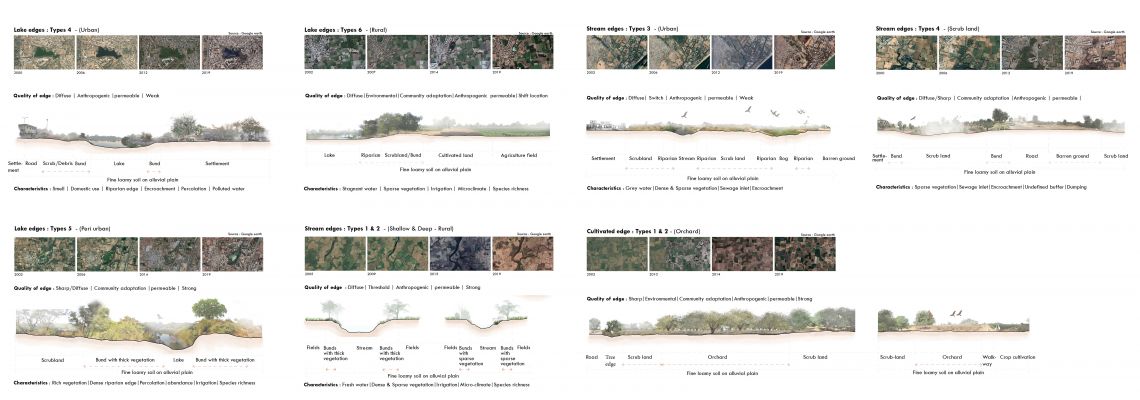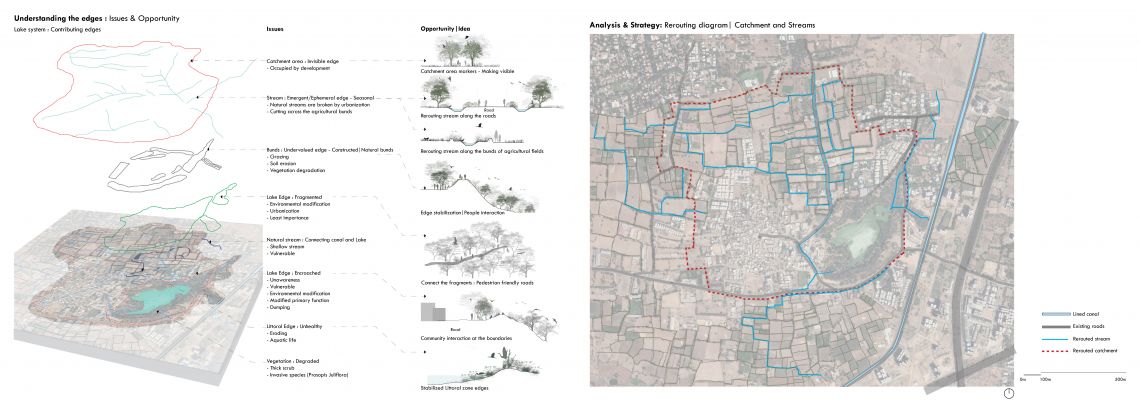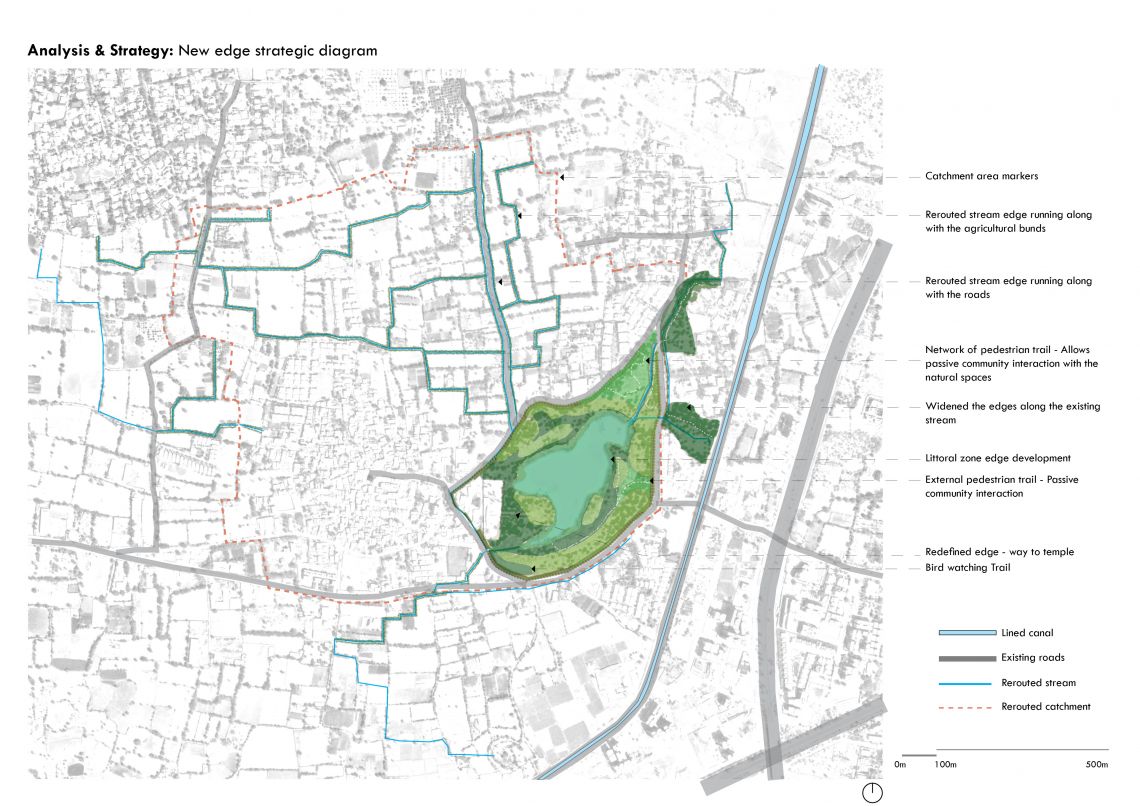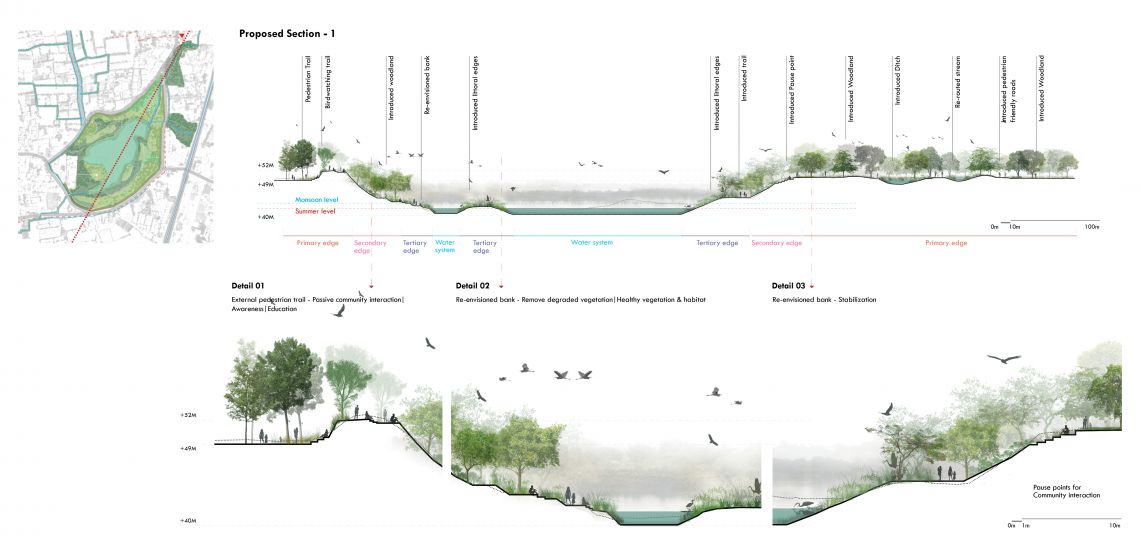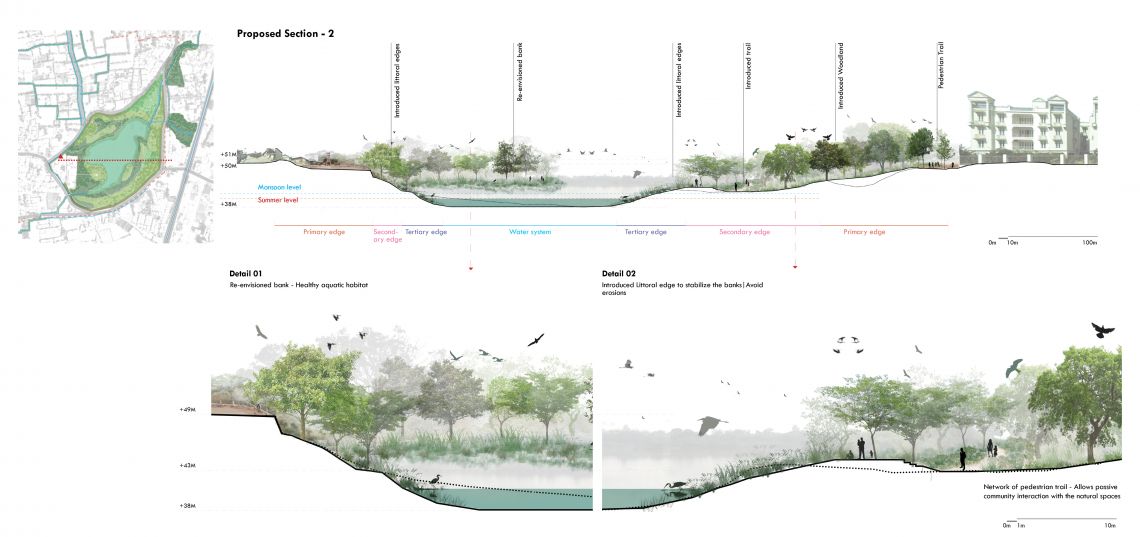Your browser is out-of-date!
For a richer surfing experience on our website, please update your browser. Update my browser now!
For a richer surfing experience on our website, please update your browser. Update my browser now!
“Linear strips of space are overlooked, underappreciated, and marginalized. […] Chunks are
thought to be the best commissions. […] Yet this belies the reality of much landscape architectural
production, which is increasingly devoted to exploring what happens in the margins—in left over
spaces, in-between areas, and along-side conditions. (Smith 1999: 77)”
The project intends to study the interaction between different ecosystems - Edge, how they are
contributing to overall landscape pattern, changes in characteristics along with its influence on
species richness, size, and potential. These are often the most dynamic locations in the
ecosystem. Edges, zone of transition, consist of maximum activity, exchange, hybridization,
instability and they are spatially impermanent too. One needs to think of both the spaces,
within and the edges when we imagine the whole, where these are sensitive and crucial. The
relationship between city and edges or thin landscapes is often problematic. These spaces are
tools of revitalization, simultaneously it has the potential of offering recreational amenity and
connectivity in a dialogue with urban structure. They separate yet unite the dissimilar natural
environments. So for connecting the sensitive parts of interfaces through physical networks and
functions, these hold the potential to become high-quality natural spaces in the midst of dense
urban fabric.


